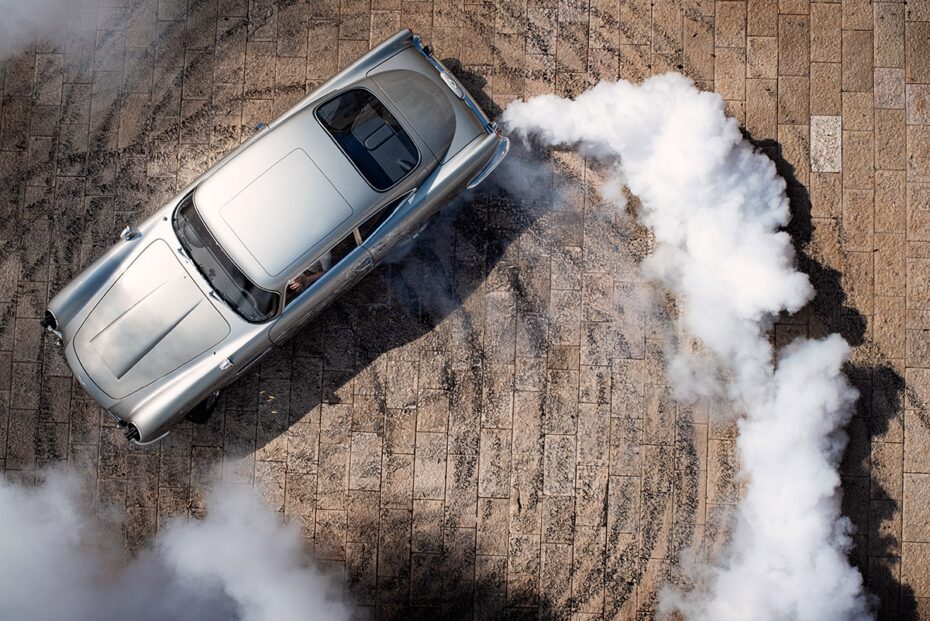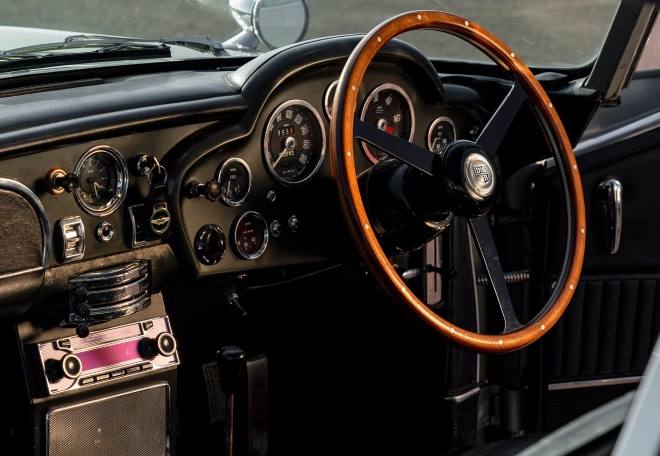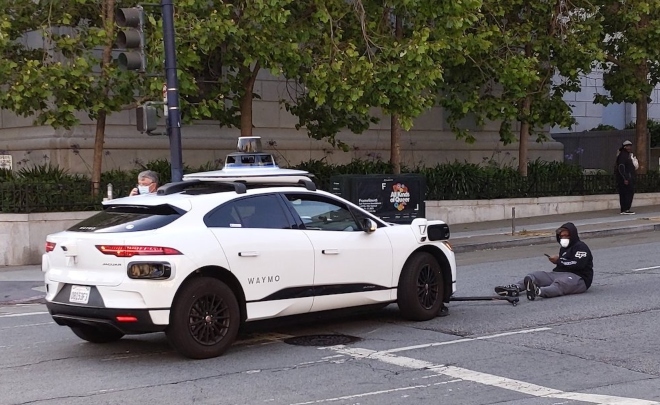Is There Room for Self-driving Automobiles in Luxurious Motoring?

The Tesla Model S. Photo: Tesla.
The word “automobile” entered the English lexicon in the late 18th century from French, a combination of the Ancient Greek autós (αὐτός) meaning “self” and the Latin mobilis meaning “mobile”. Originally, the word referred to the transition from artificial vehicles that no longer relied on external energy sources such as horses, but instead were powered by their own engines. Now it seems ironic that the word itself heralded the advent of truly “self-driving” vehicles.
Self-driving vehicles are fast becoming a reality in the automotive industry today. To be considered fully autonomous, a self-driving vehicle must both specify a path from point A to B and be able to navigate the route safely on its own and without human intervention. Currently, this ongoing work relies on a combination of sensors reading the external environment (e.g. cameras, radar, lidar, etc.) and artificial intelligence (AI) to understand the feedback.
The companies developing self-driving cars range from Audi to Google, although Google’s Waymo has already launched its own fully autonomous commercial ridesharing service, Waymo One, in partnership with Lyft. The service is currently being tested but is currently available in the US cities of Phoenix, San Francisco and soon Los Angeles.
 Steve Mahan, former director of the Santa Clara Valley Blind Center, stands next to a Waymo self-driving car in San Francisco on Tuesday. Photo: Eric Risberg/ Associated Press.
Steve Mahan, former director of the Santa Clara Valley Blind Center, stands next to a Waymo self-driving car in San Francisco on Tuesday. Photo: Eric Risberg/ Associated Press.
The technology race for self-driving cars is in line with the rise of Web3 and Big Data, where data is not only decentralized, but also leveraged for machine learning and AI – digitizing manual processes into automatic processes and beyond that obscuring layers and layers of hardware to smooth, clean interfaces that seamlessly operate a variety of software programs at the touch of a finger.
Self-driving cars are nothing short of an engineering marvel, but at the same time they challenge the definition of what constitutes a good car. Sustainability, road safety and comfort are aspects of automotive engineering in which all car manufacturers want to excel. But the omission of the driver himself seems to turn the car into a whole different beast. So maybe in the world of luxury cars we shouldn’t be asking what makes a good car, but what makes a loved car.
 Sean Connery with the Aston Martin DB5 at Stoke Poges while filming Goldfinger, 1964.
Sean Connery with the Aston Martin DB5 at Stoke Poges while filming Goldfinger, 1964.
Photo: United Artists, Danjaq LLC.
The driver makes the car
Call it what you will: an effective marketing model or consumer-focused branding; Cars are defined by the people who drive them. It can be a bit of a chicken-and-egg puzzle trying to figure out which came first: the discursive image of the ideal car owner, or the loyal car lovers themselves. Regardless, the relationship between cars and the people who love, own, or hope to own them is different , an intimate relationship – a relationship based on the sheer euphoric act of driving.
Video: Aston Martin.
For proof, look no further than the most famous car in history: James Bond’s Aston Martin DB5. The DB5 has captured the hearts of many car enthusiasts since its debut in 1963, not least because of its agent 007 at the wheel, but also because of the importance of driving it. Between chasing bad guys down winding cobblestone streets and cruising silently from one city to another in the middle of the night like international spies do, the films only show what the car was built for: working like a beast.
 Daniel Craig’s Bond maneuvers an aggressive turn in the DB5 in No Time To Die, 2021. Photo: Danjaq LLC, Universal, MGM.
Daniel Craig’s Bond maneuvers an aggressive turn in the DB5 in No Time To Die, 2021. Photo: Danjaq LLC, Universal, MGM.
One of the fastest cars in the world at the time, the DB5 featured a naturally aspirated 4.0-litre in-line six producing 282 hp and 380 Nm. All power was sent to the rear wheels through a five-speed manual gearbox. Cornering with the DB5 is just a step away from hardcore, although on such vehicles the heavier the steering, the less effort required mid-corner. However, the engine more than makes up for this with its smooth, graceful handling at tremendous speeds, living up to the DB5’s grand tourer status. Even modern GTs with their sophisticated suspension geometry and adaptive damping would hardly be able to keep up with this senior in terms of driving comfort.
 Sean Connery’s Bond cruises the countryside in the DB5 in Thunderball, 1965. Photo: United Artists, Danjaq LLC.
Sean Connery’s Bond cruises the countryside in the DB5 in Thunderball, 1965. Photo: United Artists, Danjaq LLC.
At the wheel of the car is a more than well-tuned, comfortable leather seat that offers the driver additional visibility, as well as a generously dimensioned, tactile wooden steering wheel paired with a pleasantly delicate gear knob, which ensure your driving pleasure. It’s also known that the pedals are so flimsy that the rider feels awkward in everyday sneakers, almost as if they’re asking you to put on a pair of shiny oxfords. The wind noise over the front fenders due to the lack of soundproofing is downright pleasing and reminds the driver that they are already really accelerating.
 Inside a preserved DB5 from the 1960s. Photo: Car, UK.
Inside a preserved DB5 from the 1960s. Photo: Car, UK.
 The dainty shift knob of the original DB5. Photo: Car, UK.
The dainty shift knob of the original DB5. Photo: Car, UK.
The DB5 was discontinued in 1965 but received a special limited edition of 25 examples in 2020 to coincide with the release of the final Daniel Craig Bond film No Time To Die – a testament not only to its firm place in automotive history as an agent 007 car, but also out of a love for cars that were meant to be learned, almost fought for and ultimately driven masterfully. The 2020 DB5 costs a whopping $3.6 million. Could a switch to self-driving cars be endured when a name as iconic as the DB5 is at the heart of the luxury car? Without James Bond to ably take the wheel, the iconic DB5 seems to lose a large part of what makes it so popular.
 The sequel to the 2020 Aston Martin DB5 Goldfinger. Photo: Aston Martin
The sequel to the 2020 Aston Martin DB5 Goldfinger. Photo: Aston Martin
Disruption of the automotive industry
Perhaps it is this lack of identity that defines the self-driving car. After all, autonomous vehicles are not made to be driven – they were created to serve social purposes. In the US, the National Highway Traffic Safety Administration estimates that 94% of major accidents are due to human error, including intoxication or negligence. Self-driving cars are said to be an answer to the inherent problem of human effort – the risk of failure due to exhaustion. In addition to the goal of increasing road safety, the autonomous vehicle industry also promises to help reduce the carbon footprint through greater fuel efficiency and self-driving carsharing.
 A Waymo One car avoids a fatal crash involving a scooter. Photo: Twitter @tsimonite
A Waymo One car avoids a fatal crash involving a scooter. Photo: Twitter @tsimonite
Autonomous trucks are being tested in the US and Europe in hopes of improving long-distance truck drivers’ safety and job quality, while Beijing, China is in the process of deploying autonomous street sweepers around the city. These projects are disrupting the automotive industry by fundamentally changing the way cars are engineered. In this sense, cars are not made for the driver, but are designed to compensate for the driver’s inherent limitations.
![Seven autonomous urban maintenance vehicles developed by Chinese internet search giant Baidu Inc. sweep streets in Beijing's Shunyi district in September. [Photo by Yuan Yi/For China Daily]](https://luxuo-com-production.s3.ap-southeast-1.amazonaws.com/2023/07/china.jpg) Autonomous urban maintenance vehicles developed by Chinese internet search giant Baidu Inc. sweep streets in Shunyi District, Beijing, September 2018. Photo by Yuan Yi/ China Daily
Autonomous urban maintenance vehicles developed by Chinese internet search giant Baidu Inc. sweep streets in Shunyi District, Beijing, September 2018. Photo by Yuan Yi/ China Daily
Nevertheless, fully autonomous cars are far from finished, there are countless reports of errors and accidents. The technology is growing, but very slowly. The problem of growth and scaling in the industry is perhaps most clearly illustrated by Elon Musk’s Tesla in 2021, when he first announced that he would have “over a million full-car Tesla cars on the road.” , was lost -drive hardware”. Tesla stock could see a rebound this summer, but it can only be described as “volatile” and “risky.” The price hit a 52-week low of just over $100 per share back in January and was up more than 130% in June. Musk has struggled with supply chain disruptions since 2021 and is keen to cut costs to improve its margins and produce a more marketable and affordable self-driving car.
 Musk at Tesla’s 2021 AGM. Photo: Youtube @tesla
Musk at Tesla’s 2021 AGM. Photo: Youtube @tesla
His crosshairs landed on radar technology, a core component of the autonomous vehicle’s ability to detect hazards at a distance. Without radar, Teslas would be prone to basic perception errors and worse, accidents and collisions. In the past two years, reports have mounted of Teslas misreading road signs, braking aggressively from high speeds because of imaginary hazards, and even having fatal accidents. The rush to scale and cut costs might be typical of any tech startup, but it’s almost at odds with the spirit of the luxury car.
Luxury is consistency
What remains of the luxury car figure after all the innovation and design has passed? The truth is that a true luxury car represents the unattainable. Multi-million dollar prices notwithstanding, the top cars in the luxury car world are as rare as fine jewels. They inspire driving pleasure, not so much for the luxurious driving experience, but because most people can only dream of driving one.
 Hong Kong star Aaron Kwok admires his private collection of luxury cars. Photo by : Prestige
Hong Kong star Aaron Kwok admires his private collection of luxury cars. Photo by : Prestige
Self-driving and luxury cars seem to have one thing in common: they are both not designed to be driven. The former disrupts what a car is by removing the driver and aiming to perform as many human functions as possible – a rush for innovation and creativity. However, the latter focuses on refining a car by emphasizing an individual driver’s experience, striving for perfection and being so coveted that it becomes rare and only seen on the road when its lucky owner decides decides to take it for a spin. Therein lies the euphoria of driving a luxury car and sitting in a seat that everyone has always loved.
For more car stories click here.



/https://specials-images.forbesimg.com/imageserve/603331f48e6e6dd548e7a3d6/0x0.jpg)

